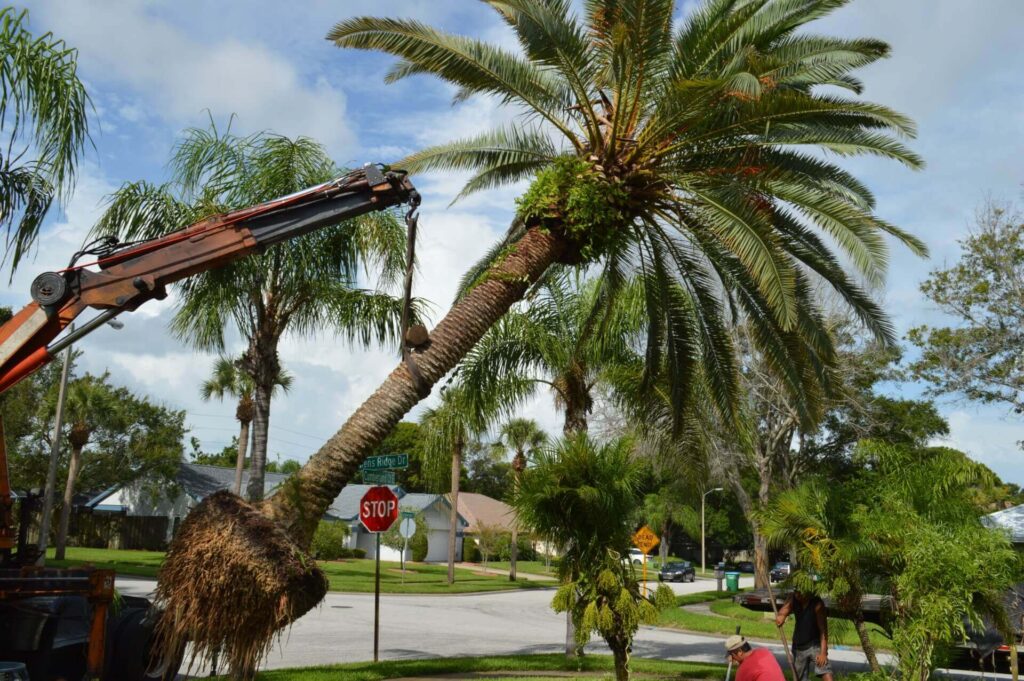On New Year’s Eve of 2015, the govt of Adjara, an administrative area in the southwest corner of Ga, issued a decree granting a business identified as Zimo Ltd. permission to unearth two swamp cypresses and a 650-ton, 135-calendar year-old tulip tree from the Black Sea coast. For a price of 6,200 Lari (about $1,875), the corporation could haul the trees onto boats and ship them 25 miles north, to be replanted in an elaborate park owned by businessman and previous Georgian Prime Minister Bidzina Ivanishvili. The decree was not perfectly-been given. On the day of the shift, the diggers have been flanked by 40 police officers, who would later on detain 5 protesters from the activist group Guerilla Gardening Tbilisi for trying to prevent a tractor.
When the barge pushed off from shore, an onlooker snapped a picture. The shot appears to be like out at the grey drinking water exactly where, in the foreground, the massive tulip tree straddles a raft with absurdly slight proportions, like a clown on a tricycle. The photograph promptly went viral, consuming the Georgian internet, which dubbed it “the swimming tree”—half in anger, 50 % in surreal disbelief. Activist Mariam Kanchaveli advised the BBC she was “mad, sad and at the exact time still laughing.” Ivanishvili would later protect himself: “It’s my pastime and I actually appreciate massive trees,” he reported. “Giant trees are my entertainment.”
In the mélee, the swimming tree caught the attention of Georgian filmmaker Salomé Jashi. Her newest documentary, Taming the Garden, which premieres at an all-on the internet Sundance on Jan. 31, normally takes the photo as its ur-text, tracking the removing of yet another century-previous tree from the seaside village where it was planted to Ivanishvili’s bizarre, private Eden. The 90-moment documentary describes by itself as “a poetic ode to the rivalry among men and nature”—a summary which makes the movie audio equally extra pretentious and additional verbal than it basically is. In reality, there is no dialogue until finally a good seven minutes into the movie, and relatively little in the 83 that follow. The generation is foremost a visible a person, a sequence of primally arresting footage that achieves in almost every single body the demented, quasi-oxymoronic appeal of the image that inspired it.
The summary’s riff on the “rivalry between males and nature” is a bit extra apt. The film operates largely in a vernacular of contrasts, alternating between some impossibly lush pure environment and crude, person-manufactured appliances, there solely to tear the former down. This motif is not gentle-handed by any extend: in the dialogue-much less opening, the camera pans across overgrown buildings, spliced with near-ups of leaves and steel instruments. For the initial 5 minutes, the only sounds are waves, wind, and bird calls—until they are interrupted by a buzzsaw, and then the clanking of a crane. There are a lot of pictures of industrial drills slicing into deep soil. (The to start with words of the movie are: “That’s sufficient!”). The bluntness of the metaphor strategies overkill, but it’s salvaged by the photographs, which are restrained, very well-composed, and hyper-specialized about how the complete issue will work. It’s plainly odd and rather obscene to dig up a huge tree and place it on a boat—which would make observing the process, damaged down with shot-by-shot exactitude, oddly persuasive in the course of.
Nevertheless there is minimum talking, the discussions involved deliver, much more or less, just about all the context you will get. Jashi features virtually no exposition. The backstory is hardly ever spelled out the figures are not launched. In its place, the more substantial photograph drips out in snippets from the many villagers that walk into body. The initially audible exchange arrives when two workers—a scruffy man in a bucket hat, and a spherical, balding man—take a break at a picnic table in the woods. Their speech, like practically all in the movie, stays imprecise and figurative, hardly ever identifiably information or fable.
“Do you know the story of the old girl and the tree?” the scruffy a single asks. His bald mate states he does not, sending the 1st into a very long story. There is this villager with a mandarin orchard, he points out in Georgian, next to a big tree. The tree’s a authentic ache: he can not slice it down with out disturbing the orchard, but the branches consistently block the sun. Also, the villager is in financial debt. “So he goes to the bank to defer the financial loans, leaving his elderly mom at household,” the guy proceeds, “and just then, the lawyers appear to buy the tree. They say, Granny, we want to acquire this tree! Would you market it to us? How significantly do you want for it? So, the Granny suggests, I don’t know, give me 400! She needed 400 Lari. The attorney says, Granny, 400,000 is way too considerably! We’ll give you 40,000!”
The story it turns out is accurate, and as the employees start digging, additional information arise. The purchaser is rich and quite effective. It is unclear just what he would like with the tree, but he’s prepared to construct a highway for the town just to get it out. The newspapers say he thinks they’ll lengthen his daily life. In any case, he’s purchased a bunch in new months. Some of the gentlemen have been on a number of employment. “That man truly likes trees!” one particular guy provides for the duration of a perform crack. “He’s by no means taken a single as big as this,” states a different. In the background extra voices jump in. “It’s an intriguing question… No one particular would have envisioned it… That’s interesting! Instantly you get dollars from a tree… And when he has all the trees? Then he’ll go following the birds!”
It is not until eventually late in the movie that anyone even states Ivanishvili’s identify. When they do, it’s by surname only. There are a great deal of things just one could mention about Bidzina Ivanishvili—that he burst on to the Georgian political scene in 2011 with his personal get together, named the “Georgian Dream” immediately after the catchphrase of his albino-rapper son that, not extensive following the swimming tree fracas, the Panama Papers investigation disclosed he kept large amounts of his fortune in financial institution accounts and shell firms offshore, some of which he’d made use of to fund a disinformation marketing campaign in help of Putin’s armed forces agenda, according to the U.S. governing administration that he virtually lives in a 108,000-square-foot glass house at the top rated of a hill overlooking the nation’s money. But the film addresses none of these. Jashi gives the ex-prime minister the same oblique treatment as everyone else. Even her director’s notes refer only to “a strong gentleman, who is also the former primary minister of Georgia.” The result is to render Ivanishvili not so considerably a gentleman, but a grim and omnipresent concept, as cartoonish and perverse as a incredibly massive tree on a tiny tiny boat.




More Stories
How to Tackle a Leaking Tap without a Plumber
What Home Herb Garden is Right For You?
Hot Selling Products Wooden Duck Wholesale This Week